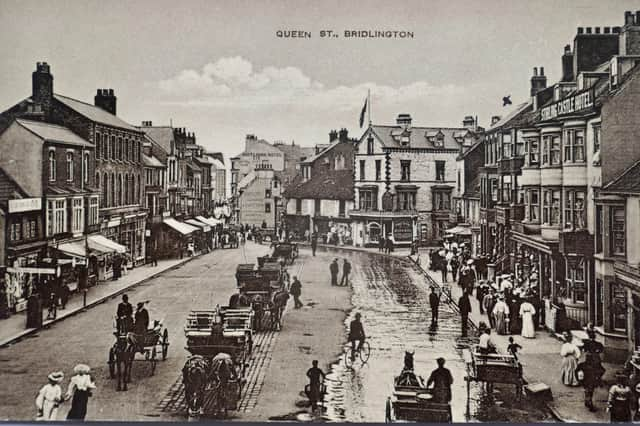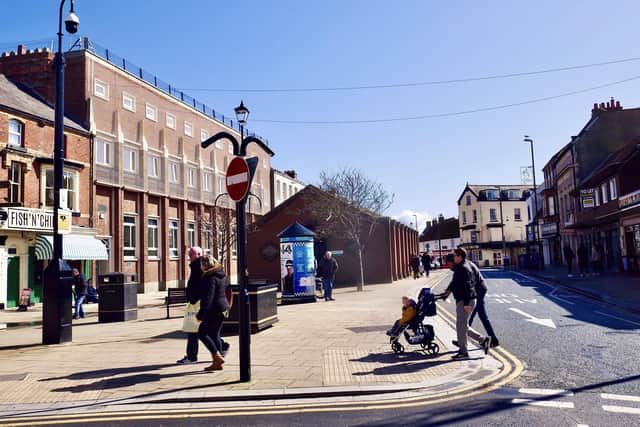The ‘Now and Then’ column with Aled Jones: The changes on Bridlington’s Queen Street


The sepia postcard reveals the area before the toilet block and other changes, showing the transformation since 1902.
Mr Jones said: “This postcard exemplifies how historic Queen Street has transformed over many decades.
Advertisement
Hide AdAdvertisement
Hide Ad“It depicts a bustling early Edwardian scene complete with horse-drawn carriages and period fashions. Just your average summer’s day on Queen Street in 1902.


“In the right foreground J. Shaw’s food store offering fish, game and poultry, and in the middle distance the Oberon Restaurant with Union Jack flying (now the Harbour Tavern). Note also, in the far background, the former Britannia Hotel (corner of Prince Street) with its advertisement for billiards, a popular sport in Edwardian times.
“Captured from an elevated position, this beautiful sepia postcard shows the exceptionally wide proportions of Queen Street 120 years ago.
“Surprisingly, Queen Street shares a lot of its history with adjacent King Street.
Advertisement
Hide AdAdvertisement
Hide Ad“In the 18th century, there was no Queen Street as we know it today.
“In fact, it was a mere back street then, dominated by the rear gardens of palatial King Street.
“Those extensive gardens afforded beautiful views of the sea and it’s reputed that the authoress Charlotte Brontë (1816-55) often stayed on King Street.
“She visited the resort, as the local historian F. R. Pearson put it “time and again for rest and refreshment during her short and troubled life” paying her inaugural visit in September 1839, which was also her first sight of an ocean.
Advertisement
Hide AdAdvertisement
Hide Ad“The finest Georgian house on King Street was the three-storey classical style mansion built by John Pitts, an army officer who served in the Napoleonic Wars. His large house is now occupied by Superdrug and the impressive rear entrance is clearly featured in the postcard, albeit with a Victorian shop frontage (middle, left).
“The first houses on Queen Street began to appear in the early 17th Century.
“They were built on the same narrow strip of land overlooking the harbour that their replacements occupy today.
“Most of the houses in the postcard (right) were specifically built as shops, hotels and restaurants in the early 19th century. A fair few have survived but the original Stirling Castle (clearly pictured), which was built with attractive bow windows c.1803, was sadly demolished in the 1960s and replaced by an inferior edifice.
Advertisement
Hide AdAdvertisement
Hide Ad“Compared to the vintage postcard, Queen Street today is only a shadow of its former self.
“It is dominated by two quite dreary edifices, a council-built toilet facility, and the large public library building (far left), this being a 1970s extension built onto the original library frontage on King Street.”